 |
| December 07, 2021 | Volume 17 Issue 45 |
Designfax weekly eMagazine
Archives
Partners
Manufacturing Center
Product Spotlight
Modern Applications News
Metalworking Ideas For
Today's Job Shops
Tooling and Production
Strategies for large
metalworking plants
Ferrari Daytona SP3: A beauty and a beast
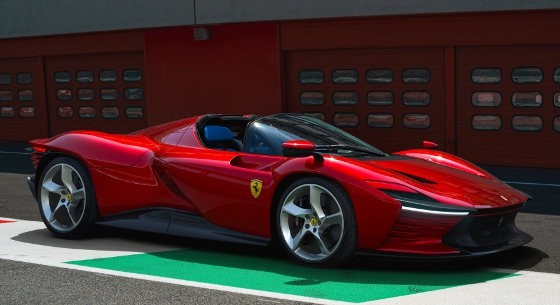
Inspired by the Prancing Horse's legendary 1960s racing prototypes, Ferrari's new limited-edition Daytona SP3 boasts the brand's most powerful mid-rear-mounted naturally-aspirated V12 ever, Formula 1 racing technologies, and a design that is so slick and pure that it's a joy to behold. Only 599 units will be made.
Ferrari says the car's deep design and technical DNA stem from the 1967 24 Hours of Daytona, where the Ferrari "took the top three places in the first round of the International World Sports Car Championship. The 330 P3/4, 330 P4, and 412 P that famously shot past the checkered flag side by side perfectly encapsulated the spirit of the sports prototypes of the 1960s, a decade now considered the golden era of closed wheel racing."
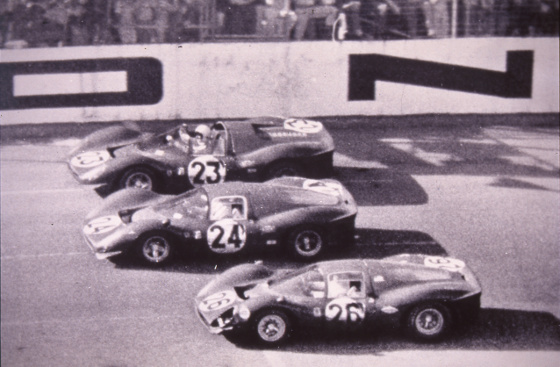
Ferrari 330 P4 (Daytona 24H, 1967).
There are lots of details to unpack, but here are the highlights. The Daytona SP3 is the second car to join the limited edition Icona series, which also includes the Ferrari Monza SP1 and SP2. It pays homage to the mid-rear-engine Ferrari V12 sports prototypes that earned the marque its legendary motor sport status.
Thanks to features like chimneys that extract low-pressure air from the underbody, the Daytona SP3 is the most aerodynamically efficient car ever built by Ferrari without resorting to active aero devices. The car can accelerate from 0 to 62 mph in 2.85 sec and from 0 to 124 mph in just 7.4 sec.
The overall lines are rounded, including the dome-like cabin. It sports butterfly doors that have an air box integrated into them to channel air to the side-mounted radiators. Ferrari says the pronounced surface of the doors, whose leading edge forms the rear of the front wheel arch, also helps to manage the airflow emerging from the front wheels. This surface treatment also closely recalls that of cars such as the 512 S, which partly inspired the Ferrari Daytona SP3's stylistic code.
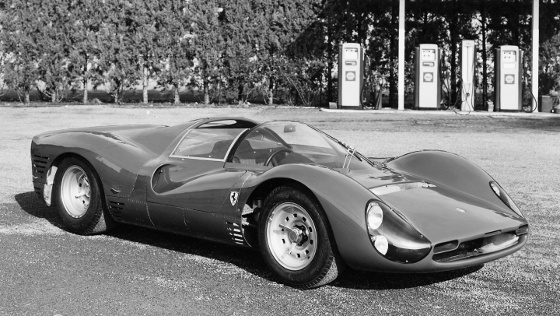
Ferrari 512 S (1970).
The wing mirrors have been moved ahead of the doors to the top of the wings, recalling the sports prototypes of the 1960s.
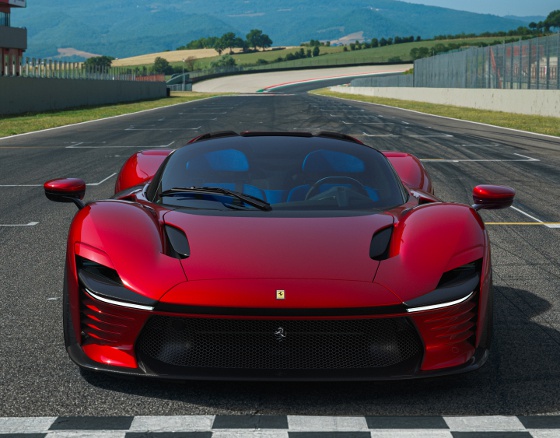
The front of the Daytona SP3 is dominated by two imposing wings that feature outer and inner crests: the latter dive into two air vents on the hood, making the wings look wider. The headlight assemblies are characterized by an upper mobile panel that recalls the pop-up headlights of early supercars.
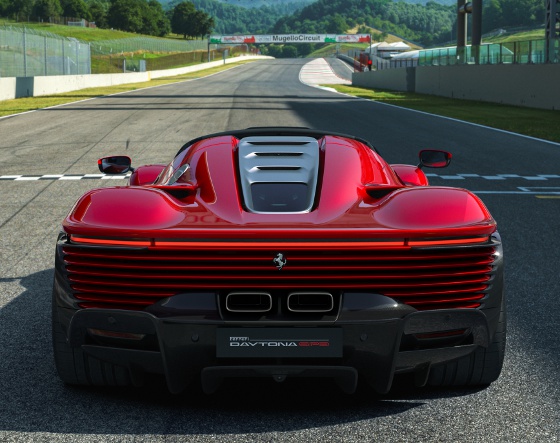
The rear bodywork highlights the powerful appearance of the wing by the repetition of the twin-crest theme and the aerodynamic vent. The compact, tapered cockpit combines with the wings to create a powerful tail with a central backbone element inspired by the 330 P4. The naturally-aspirated V12 is revealed at the end of the car's prominent backbone.
The Daytona SP3 has a wraparound windscreen. The glass extends all the way to the start of the removable hard top. A nolder is integrated into its upper seal to accurately direct the flow over the header rail when driving without the hard top. The middle of the roll hoop area dips to follow the shape of the rear bodywork buttresses and the engine cover and thus minimizes the possibility of the wake deflected towards the rear header rail tumbling back into the area between the seats. The airflow at the rear of the side windows is channeled by the rear trim behind the headrests toward a centrally recessed slot protected by the wind stop so that it is vented outside the cockpit.
The chassis is built entirely from composite materials using Formula 1 technologies. Aeronautical composites were used, including T800 carbon fiber for the tub, which was laid-up by hand to guarantee the correct amount of fiber for each area. T1000 carbon fiber was used in the doors and sills. Kevlar was also used for areas that are most subject to impact. A new tire was developed with Pirelli specifically for the Daytona SP3 -- the P Zero Corsa.
The car is also equipped with the latest version of Ferrari's SSC (Side Slip Angle Control), which, for the first time on a mid-rear-engined V12, includes the FDE (Ferrari Dynamic Enhancer) to increase cornering performance. This lateral dynamics control system acts on the brake pressure at the calipers to control the car's yaw angle in on-the-limit driving and can be activated in Race and CT-Off modes.
Ferrari chose the 812 Competizione's engine as its starting point, but relocated it to the mid-rear position to optimize the intake and exhaust layout as well as fluid-dynamic efficiency. The result is the F140HC engine, which is the most powerful internal combustion engine ever built by Ferrari. It delivers 828 hp along with 697 Nm of torque and maximum revs of 9,500 rpm.
The 6.5-L engine has a 65-degree vee between its cylinder banks and a 7-speed gearbox. Ferrari says particular attention was lavished on reducing the engine's weight and inertia by adopting titanium con rods, which are 40% lighter than steel, and the use of a different material for the pistons. The new piston pins have a Diamond Like Carbon treatment (DLC), which reduces the coefficient of friction to improve performance and fuel consumption. The crankshaft has been rebalanced and is now 3% lighter.
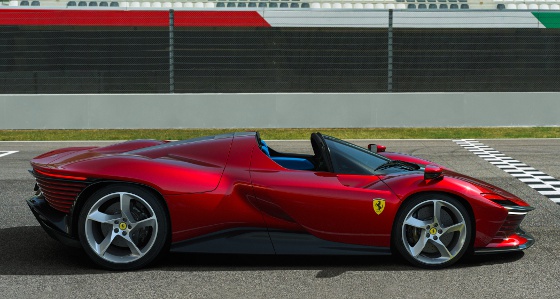
Valve opening and closing is by way of sliding finger followers, derived from F1 and developed with the aim of reducing mass and availing more high-performance valve profiles. The sliding finger followers also feature DLC coating and their function is to transmit the action of the cam (again with DLC coating) to the valve using a hydraulic tappet as the pivot for its movement.
The intake system has been radically redesigned. The manifold and the plenum are now more compact to reduce the overall length of the tracts and deliver power at high revs, while the torque curve is optimized at all engine speeds by a system of variable geometry inlet tracts. The management strategies for the gasoline direct injection system (GDI at 350 bar) have been further developed: It now comprises two gas pumps, four rails with pressure sensors that provide feedback to the closed-loop pressure control system, and electronic injectors.
The ignition system is constantly monitored by the ECU (ION 3.1), which has an ion-sensing system that measures ionizing currents to control ignition timing. It also has a single and a multi-spark function for when multiple ignitions of the air-fuel mixture are required for smooth, clean power delivery. The ECU also controls combustion in the chamber to ensure that the engine is always working at peak thermodynamic efficiency.
A completely new variable-displacement oil pump was developed to allow oil pressure to be continuously controlled right across the engine's entire operating range. A solenoid valve, controlled by the engine ECU in a closed loop, is used to control the pump's displacement in terms of flow and pressure, delivering only the amount of oil required to guarantee the functioning and reliability of the engine at every point in its functioning. A less-viscous engine oil than in the previous V12 is being used, and the entire oil scavenge line has been made more permeable to make it more efficient.
The increase in the F140HC's engine power output meant a corresponding increase in the thermal power that had to be dissipated (and thus an increase in the radiating masses for the coolant). To allow for the aerodynamics solutions required for the front end meant concentrating development on cooling efficiency first and foremost. Detailed work went into the design of the fan housing, the opening on the underbody to evacuate hot air, and the intake duct, which were all optimized to avoid having to increase the size of the front radiators.
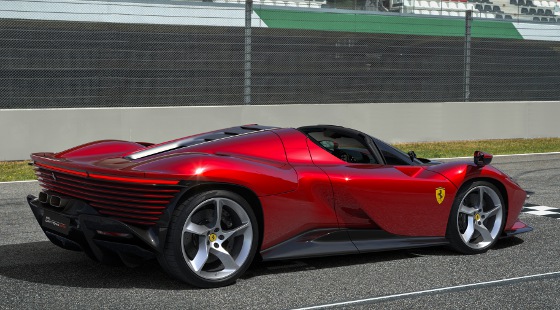
Ferrari says considerable research also went into the design of the flanks, which benefitted from the layout of the radiating masses for gearbox and engine oil being shifted toward the center of the car. This solution paved the way for the integration of side channels into the doors, allowing the intake ducts for the radiators to be moved forward in the chassis. As a result, the front wing creates an ideal section for the intake ducts and captures fresh air that is also highly efficient in terms of cooling the radiators.
The most important development area for downforce was the rear spoiler. To correctly balance front and rear downforce, the engineers fully exploited the opportunity created by the repositioned engine air intake and the new rear taillight design. These two solutions meant that the spoiler could be extended to occupy the entire width of the car. Its surface was not only increased in width, but the lip was also lengthened towards the rear, which helped increase the downforce without penalizing drag.
The most innovative solution, as well a defining characteristic of the car, can be found at the rear of the underbody. Floor chimneys are connected to two integrated louvers in the rear wings by vertical ducts. The natural suction created by the curvature of the wings maximizes air flow through the ducts and creates a fluid-dynamic connection between flows over the underbody and the upper bodywork.
The final area of development was to increase the diffuser's expansion volume, both in the vertical and horizontal plane, thanks to installing the exhaust pipes in a high, central position. The space that was freed up centrally was dedicated to a solution similar to a double diffuser. The diffuser permits the expansion of the flow on two distinct levels, creating a bridge shape that seems to float in the tail's volume.
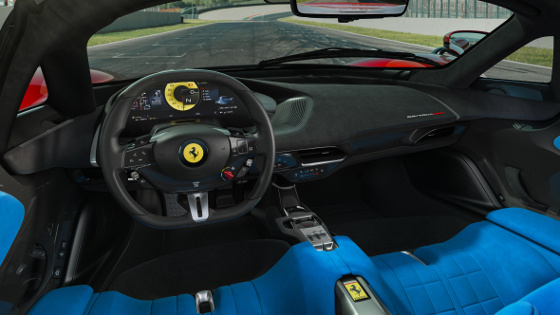
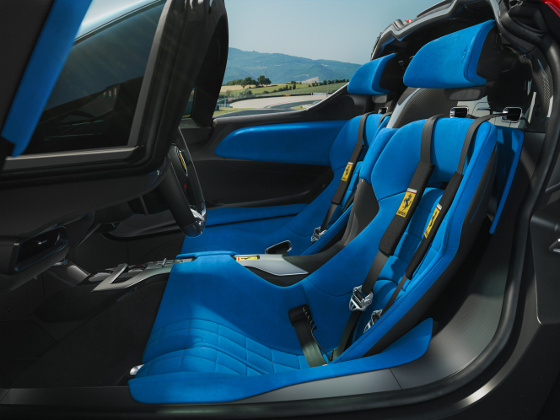
Inside, the Daytona SP3's steering wheel features the same Human-Machine Interface (HMI) already seen on the SF90 Stradale, Ferrari Roma, SF90 Spider, and 296 GTB. Touch controls mean that drivers can control 80% of the Ferrari Daytona SP3's functions without moving their hands. A 16-in. curved HD screen relays all driving-related information.
The seats are integrated into the chassis and have the ergonomic wraparound design typical of high-performance cars. The door panel design helps to visually widen the cockpit. Some trimmed areas have been added to the carbon-fiber panels; leather padding on the door panel at shoulder height strengthens the connection with sports prototypes and further accentuates the wraparound effect.
There are many more features. Learn more and get updates at ferrari.com/en-US/auto/ferrari-daytona-sp3. Pricing is $2.25 million.
Source: Ferrari
Published December 2021
Rate this article
View our terms of use and privacy policy
